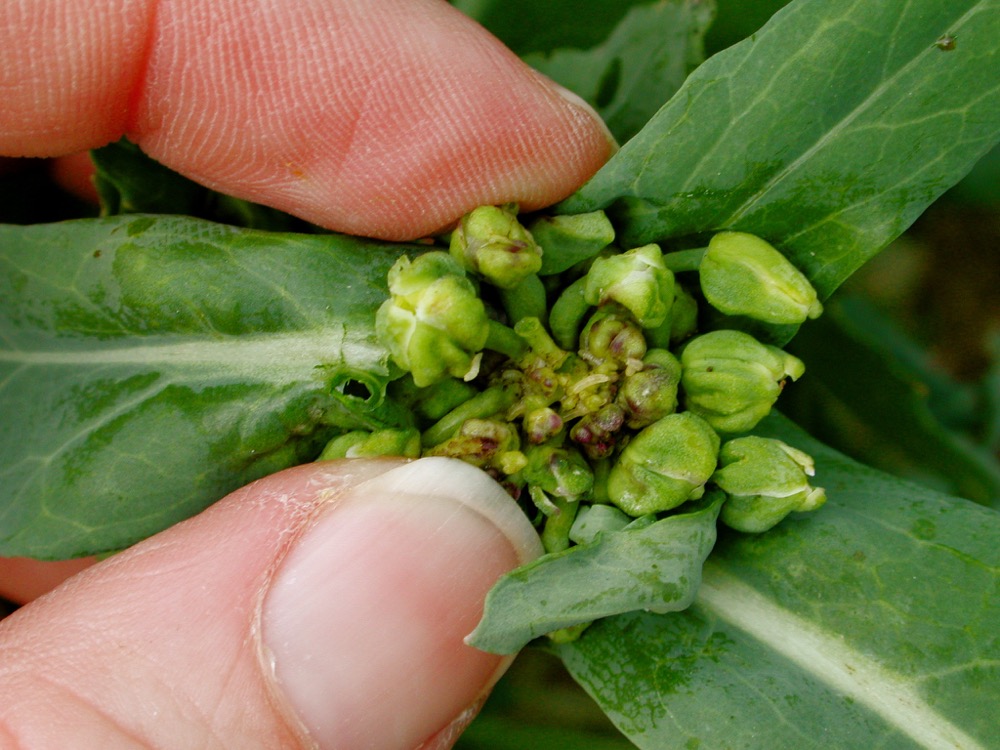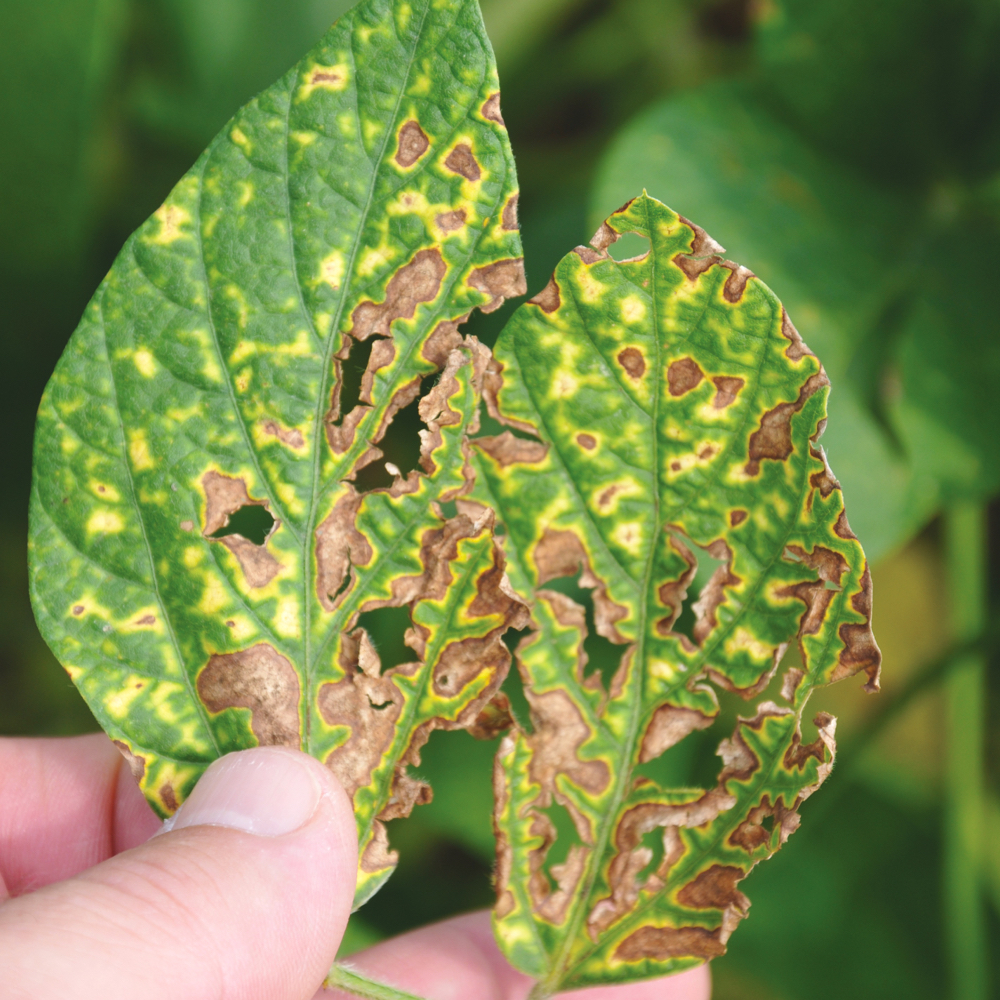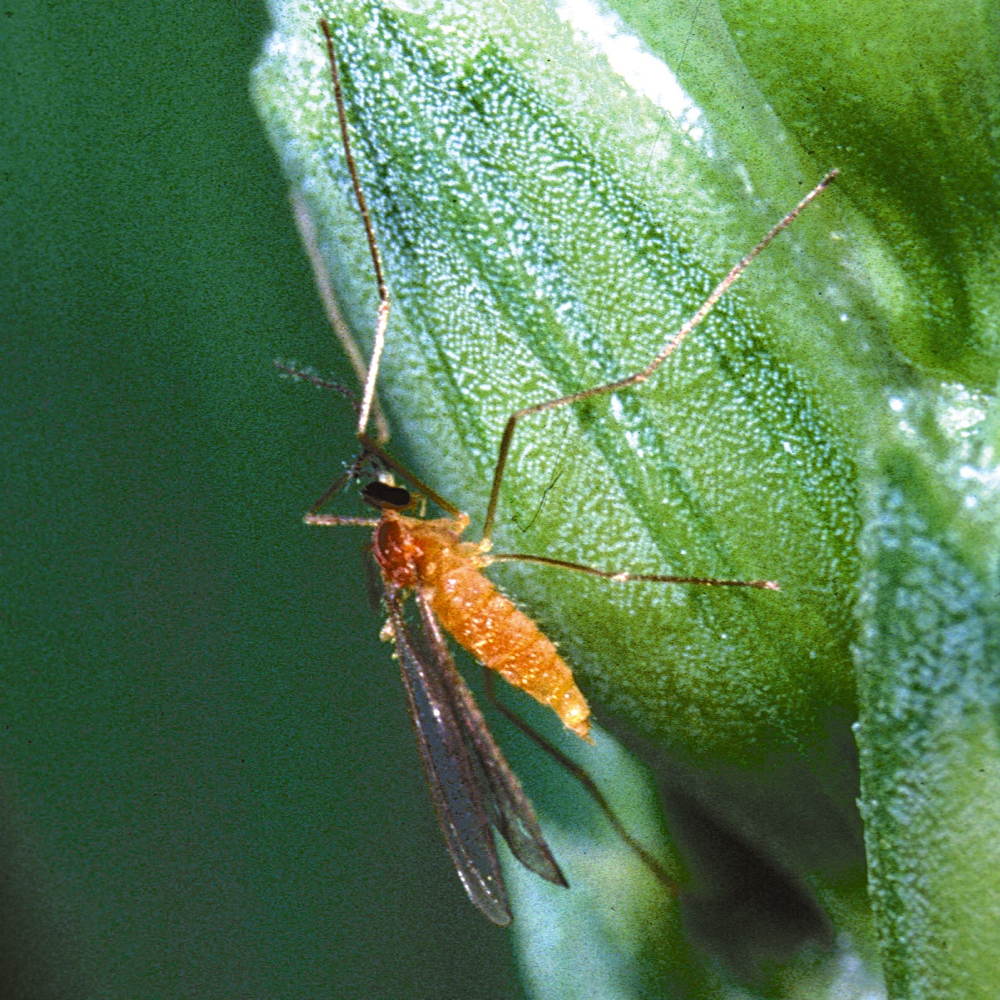Do near-north canola growers have to stop growing the crop? This is the challenge facing canola growers in the Ontario’s Temiskaming district as they battle increasing pressure from swede midge. The pest, which wasn’t a huge issue in Ontario until 2011, is now causing large-scale yield loss in parts of Ontario’s near north.
Terry Phillips, an agronomist with Co-op Regionale de Nipissing-Sudbury, in the Temiskaming area, acknowledges the difficulty in telling growers not to grow a staple like canola.
Phillips points to a neighbouring grower who yielded 0.9 tonnes per acre in 2013, but then got only 0.25 tonnes in 2014 even though he planted into a field that hadn’t seen canola for several years. “Swede midge migrated west in his case, and found him,” Phillips says.
Read Also

Sensing the soil: Root cell research finds ‘stress hormone’
Research into how root cells react to soil stressors could help plants better adapt to changes in their climate.
“They’re not supposed to be that mobile a pest, but they seem to find canola.”
Agronomists and researchers are still trying to determine what brings swede midge to fields with such intensity.
“It seems about the third week of June you start to get these spikes of population of swede midge coming out of the soil from the pupae, and we thought it was a temperature and moisture relationship and now we think it’s moisture.”
Phillips notes that on his own farm in 2014, a summer student did midge counts from pheromone traps twice each week.
The numbers were always single digit. Then, following a light shower on the weekend, a Monday count turned up more than 1,000 in the trap.
“I remember because it was a Tuesday morning, I sprayed it at 5:00 in the morning because I had to go to Guelph that day, and that was the last pass I did and the headlands were starting to bolt, so I wanted to get out ahead of the bees in the morning,” says Phillips.
“I had 21 acres as a test plot — I thought we were on top of it, sprayed it four times and I had a third of a tonne of canola.”
In the end, he spent $450 per acre to grow the crop but earned only $150 for his efforts.
Confounding the battle is the swede midge’s ability to adapt and overcome whatever farmers throw at it.
In most years, swede midge goes through four generations, with several plant species that can host the insect. They can also overwinter for more than one year, and contrary to the common belief that they’re poor fliers, the pest can fly up to one kilometre.
More questions than answers
Stresses such as extreme wet weather or a cold spring can push the crop into extra trouble.
Current research by Dr. Rebecca Hallett of the University of Guelph and Brian Hall from the Ontario Ministry of Agriculture, Food and Rural Affairs (OMAFRA) indicates a two-stage insecticide application may be the best approach — one at the two-leaf stage and a second just prior to bolting.
“It’s trying to keep up to the economics,” says Phillips, noting there were some growers in the north who sprayed as many as six times in 2014.
“They use their own equipment so they weren’t paying application costs, but you’re still spending money and flirting at the end with the whole issue of ‘bee-kills.’”
And by applying any chemical spray — whether it’s Matador (cyhalothrin-lambda), Coragen (chlorantraniliprole) or something else — as many as six times in a season, a grower is one step closer to selecting for resistance.
One possible plan, says Phillips, is to install traps in fields that have been affected in the past, and then to leave those traps in place for up to four years to track pest movement.
But all of these measures take time and scarce resources, first in determining a course or courses of action, and then implementing them and charting their efficacy.
The other challenge to overcoming this particular pest is the lack of alternative crops for the Temiskaming-West Nipissing-Cochrane triangle.
Phillips plants soybeans, and he’s also working with business interests in Saskatchewan, trying to determine the viability of fababeans grown in Ontario and shipped to the Middle East.
But there are certain logistics and climate-related hurdles for the northern region, especially with corn and soybeans.
Since there aren’t the processing/crush facilities that are commonplace in the south, most of what’s grown in the region is fed to local livestock.
Trucking costs, especially with the current commodity price situation, means the area has limited competitive stretch.
Later in the season, the day-length is another barrier to a quick-fix solution. At the start of summer, Phillips and other growers can count on a few more minutes of daylight.
But by season’s end, the days are starting to get shorter at a faster rate, which would decrease yield in corn and soybeans.
















